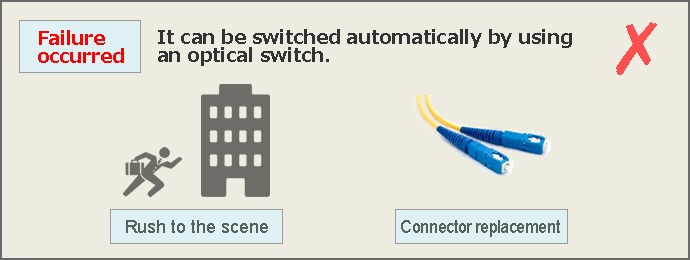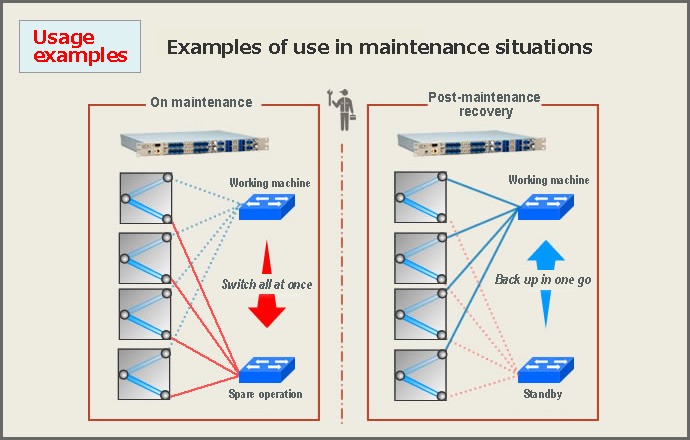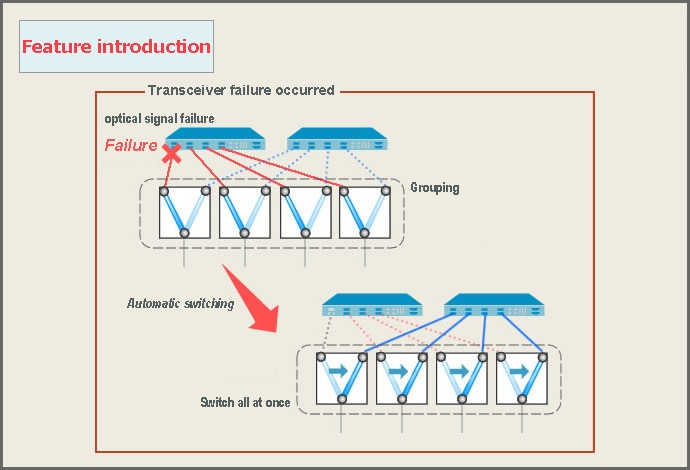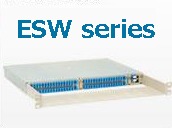What is an optical switch
An optical switch, also known as an optical line switching device (automatic switching type optical patch panel), is a device that enables the network to be always connected.
Any communication protocol (Ethernet, ATM, etc.) or communication speed (1GbE, 100GbE, etc.) can be used.
Optical switch lineup list
3 advantages of optical switch
Significant reduction in network outage time
Detects network failures due to power drop and automatically switches paths*
Manual switching takes time. It can be switched automatically using an optical switch.
By using optical switches for equipment redundancy and transmission line redundancy, it is possible to significantly reduce network interruption time.



- Switching is automatically performed by detecting light interruption *1
- Switching time 10 ms or less *2
*1 The automatic switching function is only compatible with modules with a light detection function.
*2 Threshold for automatic switching judgment and protection time can be set.
Allows remote monitoring and control
Web user interface, SNMP, CLI (TELNET/SSH), etc. allow remote monitoring and control.
Continuously monitors optical power in-line with detection levels from -40dBm to +10dBm.
By monitoring the optical power of the standby system, the risk of failure is reduced.

Possible to reduce risk
- Human error reduction
- By switching the path using an optical switch, you can switch at once without making mistakes such as incorrectly inserting the optical fiber connector or staining the connector end face.

- Fail-safe design
- Because it is a passive type optical switch, even if a failure occurs in the power supply or control system of the optical switch, the communication state of light is ensured.

Features of Optical Switch
You can choose any network type or communication speed (bandwidth).

In addition, since there is no communication speed limit, for example, 1GbE and 100GbE can be used with the same model.
Therefore, even if the network equipment or its interface is changed, the optical switch can be used as it is.
*1: Ethernet, ATM, SONET/SDH, MPEG-2TS, etc.
High reliability
Highly reliable optical switch parts are used.
| Number of FITs (failure in time) | 60 |
|---|---|
| switching times | 10,000,000 times or more |
Self-holding function: Maintains the state even if power is cut off (failure).
Switching time within 10msec
Group linkage function (*3)
Linked switching of switches grouped in advance is possible.
When one optical switch switches for some reason, the optical switches in the same group also switch, supporting ring aggregation.
*3: The interlocking function is available only for the NSW series.








 close up
close up